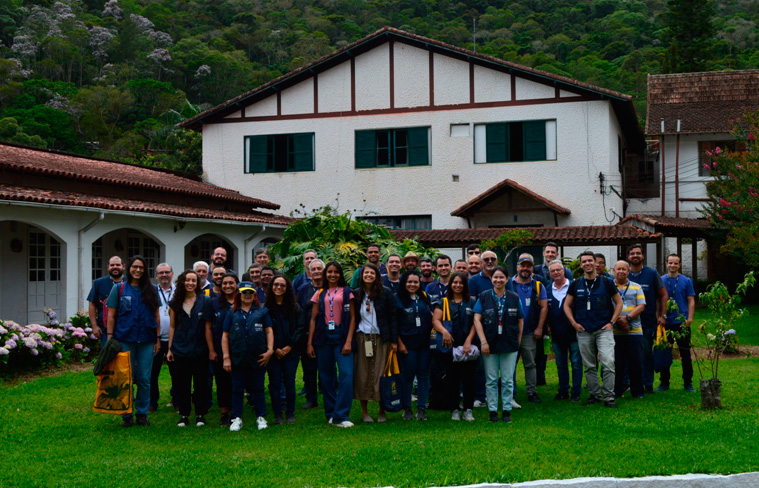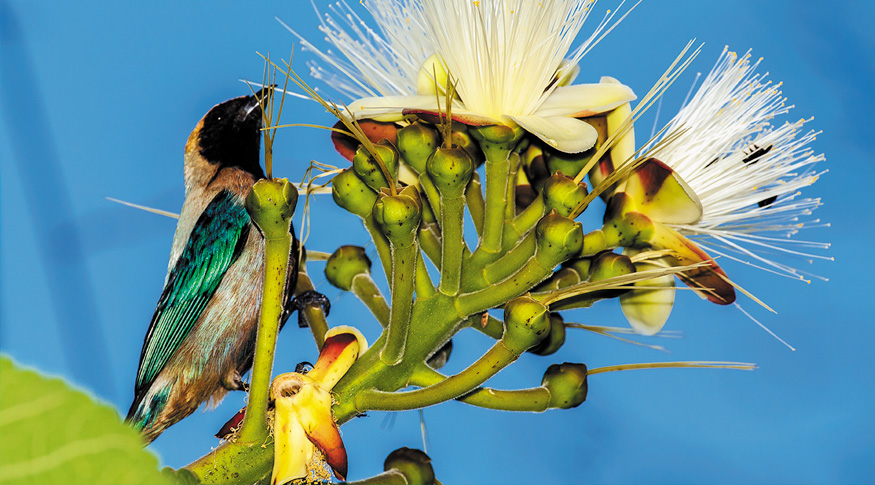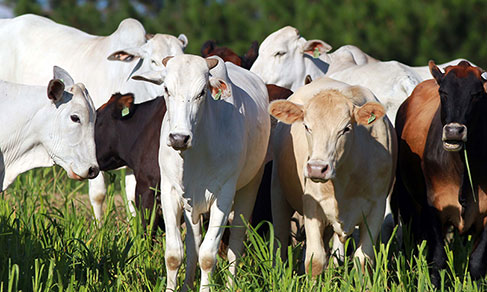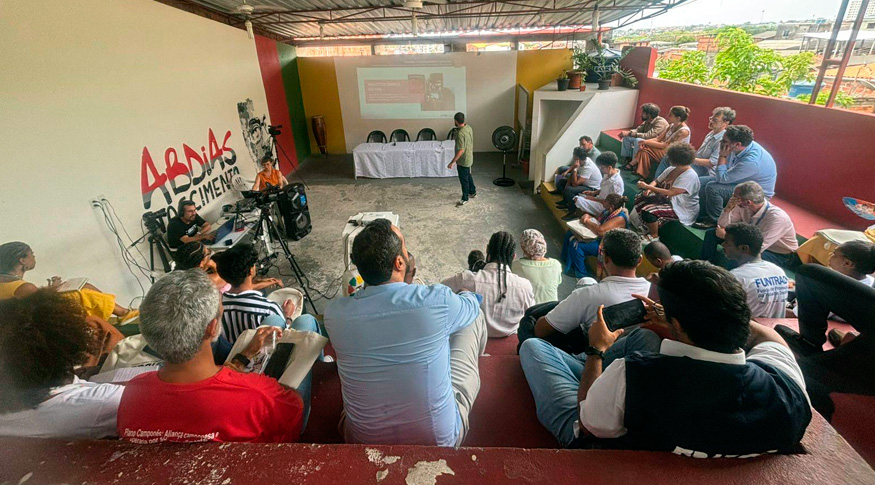2022 Census
2022 Census shows a country with less children and less mothers
June 27, 2025 10h00 AM | Last Updated: July 07, 2025 11h48 AM
Highlights
- In 1960, the Brazilian Total Fertility Rate (TFT) was 6.28 children per woman, reaching 8.56 in the North Region. In 2022, this rate dropped to 1.55 child per woman in Brazil and to 1.89 in the North Region.
- Between 2000 and 2022, the average age in which Brazilian women had children rose from 26.3 years to 28.1 years. Among the Federation Units, the highest average fertility age was in the Federal District (29.3 years) and the lowest one, in Pará (26.8 years).
- The percentage of Brazilian women aged between 50 and 59 years who did not have children was 10.0% in 2000 and rose to 16.1% in 2022. In 2022, Rio de Janeiro had the highest percentage of women aged between 50 and 59 years who did not have children (21%) and Tocantins, the lowest one (11.8%).
- Among the three groups of color or race analyzed in 2022, the highest TFT was that of brown women (1.68 child per woman) and the lowest one, that of white women (1.35). The TFT of black women was 1.59. Considering the five groups of color or race, the highest TFT was that of indigenous women (2.84) and the lowest one, that of yellow women (1.22).
- In 2022, white women showed the highest average fertility age (29 years), followed by the black (27.8 years) and brown women (27.6 years).
- The TFT for women without any education or with incomplete primary education was 2.01 children per woman, above the Brazilian average (1.55). On the other hand, women with complete higher education had the lowest TFT: 1.19 child per woman.
- In 2022, the average fertility rate of women without any education or with incomplete primary education was 26.7 years, and 30.7 years for women with complete higher education.
- Among the religious groups, the lowest TFT was that of Spiritist women (1.01), followed by women from Umbanda and Candomblé (1.25). Women from other religions (1.39), without any religion (1.47) and Catholic women (1.49) registered similar rates, even below the Brazilian average (1.55). The only group with a TFT above the average was that of Evangelical women (1.74).
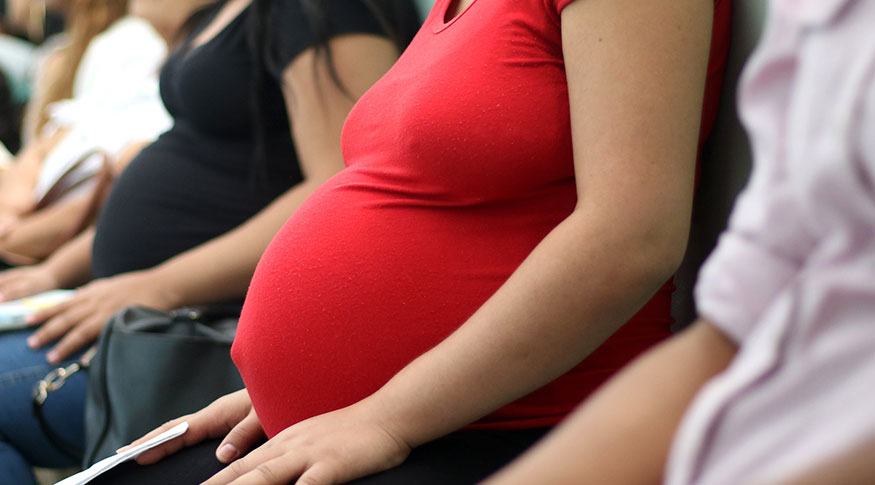
Released today by the IBGE, the data on fertility investigated by the Sample Questionnaire of the 2022 Population Census confirmed what was expected: Brazilian women are having less children and increasingly postponing maternity. The proportion of women who finished their reproductive lives without being mothers quite grew as well. These demographic trends are repeated, with more or less intensity, in all the Federation Units, showing differences by color or race, schooling level and also by religious group.
In 1960, the Brazilian Total Fertility Rate (TFT) was 6.28 children per woman, reaching 8.56 in the North Region and 7.39 in the Northeast. In 2022, the TFT dropped to 1.56 child per woman in Brazil, being 1.89 in the North Region and 1.60 in the Northeast.
The Information is part of 2022 Population Census: Fertility and migration: Preliminary sample results, released today (27) by the IBGE. The release event will take place at the Auditorium of the Institute of Chemistry (IQ) of the University of Brasília (UnB), Darcy Ribeiro campus, and will be streamed through Digital IBGE and IBGE´s social media.
The results can be accessed on the IBGE portal and in platforms like SIDRA and Census Overview. In the last case, data can be viewed through interactive maps. Please take a look also at news on international migration and internal migration.
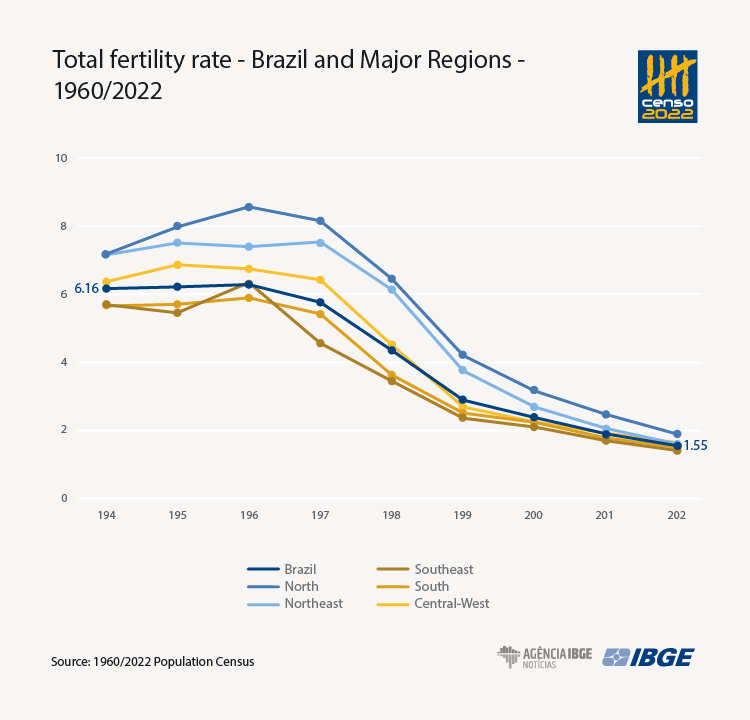
There are other data sources that provide the number of live births in a given year (IBGE´s Vital Statistics and Ministry of Health´s SINASC), yet only the Population Census data allow to cross them with schooling level, color or race and other socioeconomic characteristics of women. These more disaggregated analyses allow to deeply understand the behavior of fertility in different population groups.
Fertility shifts to the range between 25 and 29 years
The last two censuses show the ageing of the fertility curve of Brazilian women. In 2010, the peak of the distribution curve relative to the specific fertility rates was in the age group between 20 and 24 years, which weighted 26.5% in the composition of the TFT that year. In 2022, the larger concentration changed to the age group between 25 and 29 years, with a weight of 24.4% of the total fertility that year. At the same time, a reduction in the proportions of fertility in the first age groups and an increase of these proportions for the groups over 30 years have been noticed.
In 2022, the peak of the distribution of the specific fertility rates shifted from the age group between 20 and 24 years to that between 25 and 29 years in three Major Regions (Northeast. Southeast and Central-West). The exception was the North, whose fertility peak remained between 20 and 24 years, and the South, whose peak was already located in the age group between 25 and 29 years in 2010.
Federal District has the highest average fertility age: 29.3 years
In Brazil, the average fertility age was 26.3 years in 2000, changing to 26.8 years in 2010 (increase of 0.5 years) and to 28.1 years in 2022 (increase of 1.3 years). The average fertility age is an important indicator that reveals trends in the reproductive behavior, indicating whether women are having children either earlier or later.
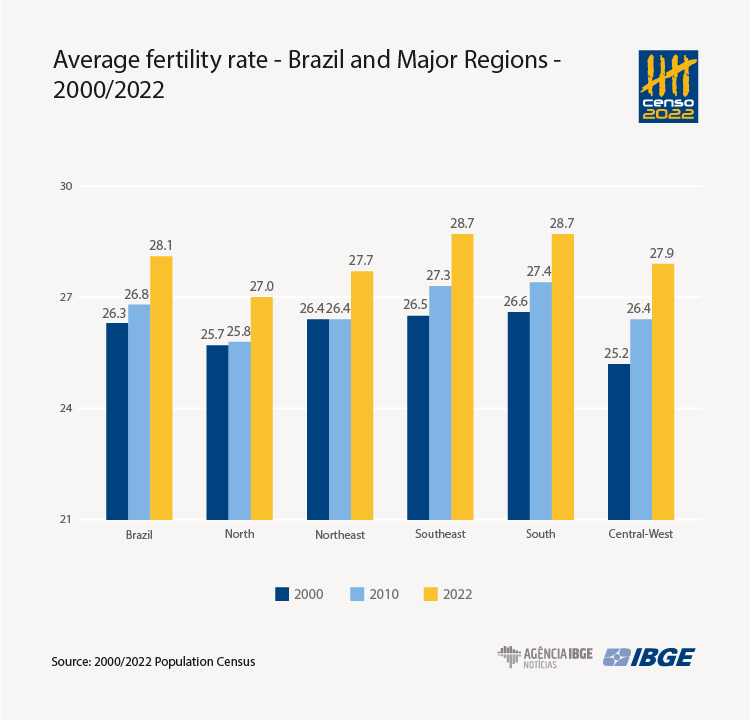
Between 2010 and 2022, that indicator increase in all the Federation Units. The highest rise was in Rondônia (7.4%) and the lowest one, in Acre (1.5%).
In 2022, the highest average fertility age was in the Federal District (29.3 years) and the lowest one was found in Pará (26.8 years).
Percentage of women aged between 50 and 59 years who did not have children hits 16.1% in 2022
The data of the 2000, 2010 and 2022 Population Censuses indicate a growth in the percentage of women aged between 50 and 59 years who did not have live births, i.e., in the group of women who recently completed the ages of the reproductive cycle with higher occurrence of births and whose absence of live births tends to be permanent.
In Brazil, the percentage of women aged between 50 and 59 years who did not have children was 10.0% in 2000, changing to 11.8% in 2010 and to 16.1% in 2022.
The increase in the percentage of women without children after their reproductive period is associated to the postponement of maternity. All the Federation Units recorded an increase in this indicator in the 2010-2022 period. In 2022, Rio de Janeiro had the highest percentage of women aged between 50 and 59 years without live births (21%). Tocantins was on the other extreme (11.8%).
Average number of children of women aged between 50 and 59 years falls from 4.2 in 2000 to 2.2 in 2022
In Brazil, the average number of live births of women aged between 50 and 59 years, i.e., those who left the reproductive cycle, was 4.2 in 2000, changing to 3.0 in 2010 and to 2.2 in 2022, confirming the reduction in the fertility level. The average number of live births from that group of women is an important indicator of cumulative fertility, as it shows how many children women effectively had along their entire reproductive period.
Between 2010 and 2022, the biggest percentage reductions in the average number of children were in the Northeast, highlighting Bahia, with a reduction of 36.8% in the period. On the other hand, Rio Grande do Sul reported a reduction of 18.4% in the average number of live births, the lowest one among the FUs.
In 2022, the Federation Units with the highest average number of live births were Amapá and Acre, both of them with 3.2 children per woman. They were followed by Amazonas, Roraima and Maranhão (the three with 3.1). In contrast, Rio de Janeiro had the lowest average number of children (1.8), followed by São Paulo, Rio Grande do Sul the Federal District (the three with 2.0).
Lowest fertility rates are from yellow (1.22) and white (1.35) women
The main groups of color or race, white, brown and black, represent nearly all women aged between 15 and 49 years (99.0%) and children born in the last 12 months (98.5%).
The groups of yellow and indigenous women are small compared with the other groups, the indigenous women having specific social and cultural characteristics that require detailed analyses to understand the differences of fertility.
The Total Fertility Rate (TFT) obtained by the 2022 Census for Brazil was 1.55 child per woman. Except for the indigenous category (2.84), all the groups of color or race showed TFTs below the so-called replacement level (2.1 children per woman), which is the rate required to maintain the population numerically stable over time, not considering migrations. In 2022, the lowest TFT was that of yellow women (1.22). The TFT of brown women was 1.68, that of black women, 1.59 and that of white women, 1.35.
Average fertility age of white women (29 years) is the highest one
In 2022, white women showed the highest average fertility age (29.0 years), followed by black women (27.8 years) and brown women (27.6 years).
Between 2000 and 2022, the average fertility age increased for the three groups. This fact derives from social, economic and cultural changes, such as increasing female education, increasing women's participation in the labor market and greater access to contraceptive methods.
In 2022, black and brown women aged between 50 and 59 years had the highest number of live births (2.5 children for brown women and 2.4 for black women), whereas this average was 1.9 child among white women.
Women with complete higher education have lower fertility rate
Brazil showed a total fertility rate (TFT) of 1.55 children per woman in 2022. For the four schooling levels analyzed, the observed rates were below the replacement level of 2.1 children per woman. TFT for women without education or with incomplete primary school was 2.01 children per woman.
Fertility retreats as education increases. Women with complete primary and incomplete secondary education had a TFT of 1.89 children per woman. Women with complete secondary education and incomplete higher education had a rate of 1.42 and, in the group with complete higher education, the indicator was the smallest one: 1.19 children per woman.
The difference between the TFT of less educated women (2.01) and those with the highest education (1.19) corresponds to a 41.1% reduction in the average number of children.
More educated women tend to have children later
Fertility becomes later as women reach higher levels of education. The average fertility age for the group without any education and or with incomplete primary school was 26.7 years. In the group with complete primary education and incomplete secondary education, this indicator rises to 27.3 years.
For the contingent of women with complete secondary school and incomplete higher education, the average fertility age reached 28.4 years, and for those with complete higher education, to 30.7 years.
Average number of children is lower among women aged between 50 to 59 years with more education
The average number of children for women aged between 50 and 59 years has been retreating in the last decades, with different intensities, depending on the level of education.
From 2000 to 2022, the sharpest drop occurred among women with complete primary education and incomplete secondary education, whose average number of children went from 3.8 to 2.1.
By 2022, these averages continued to reduce, but education levels remained determinant. The average number of children among women aged between 50 to 59 years was 2.8 in the group without any education or with an incomplete primary education, 2.1 children for those with complete primary education and incomplete secondary education, 1.8 for those with complete secondary education and incomplete higher education and, finally, 1.5 for the group that completed higher education.
Fertility of Evangelical women is the only above the Brazilian average TFT
When considering women's religious groups, total fertility rates show some differences. The lowest TFT was that of women who declared themselves Spiritists (1.01) and the second lowest rate was of women of Umbanda and Candomblé (1.25). The groups of Other religions (1.39), Without religion (1,47) and Roman Apostolic Catholic (1.49) had similar rates and below the country's average (1.55). The only religious group with a TFT above the average was that of Evangelical women (1.74).
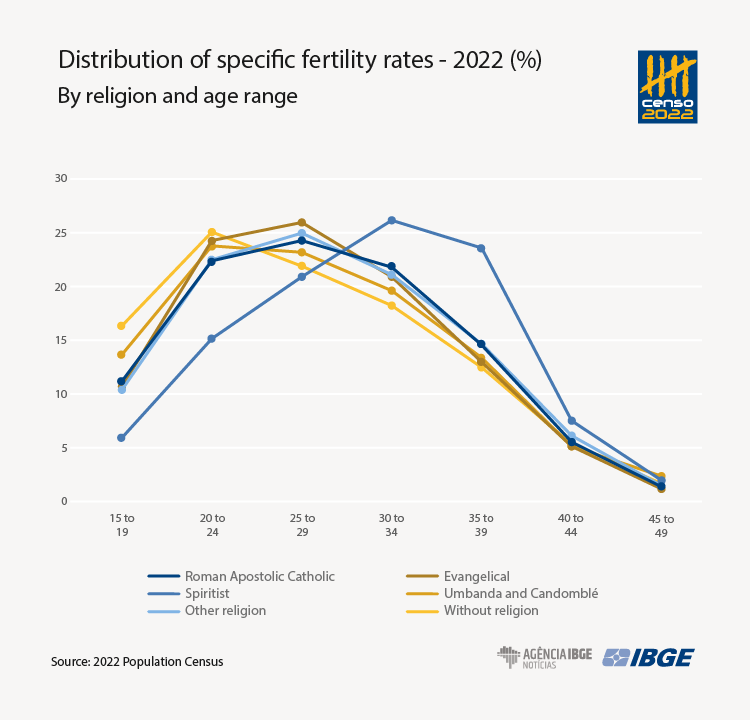
Analysis by age group also showed differences. The fertility peak of the Umbanda and candomblé and Without religion was in the range between 20 and 24 years. On the other hand, Spiritist women had their fertility peak in the range of 30 to 34 years. The other religious groups showed greater fertility weight in the range between 25 to 29 years. These differences may be linked to the age structures and specific levels of education of each religious group.
More about the survey
This release of new data of the Sample Questionnaire of the 2022 Population Census brings information on Fertility of the Brazilian female population. The results encompass the geographies Brazil, Major Regions and Federation Units, disaggregated by color or race, schooling level, sex, religion and age group.







